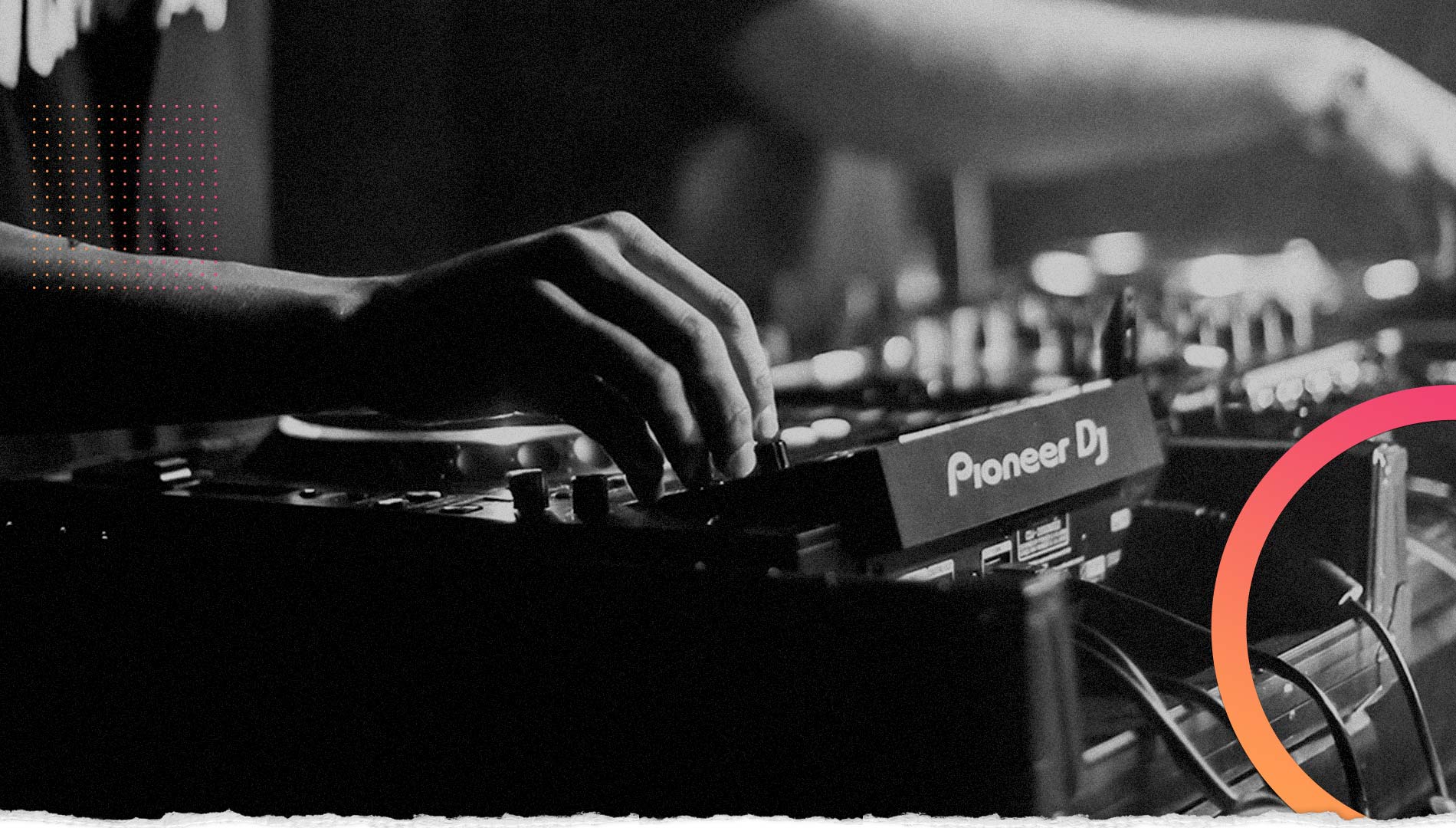Listeners:
Top listeners:
-
 play_arrow
play_arrow
Electromusic FM RADIO ONLINE 24/7
-
 play_arrow
play_arrow
London Calling Podcast Yana Bolder
The Hives: ‘We’ve Always Made The Music We Wanted To Make & Never Thought We’d Be Successful’ | theMusic.com.au

Over the course of rock’n’roll’s colourful history, many bands have tried to concoct a mythology to shroud their genesis in mystery and help them seem cooler to their fans and peers, but few have done it with the panache or commitment of Swedish rockers The Hives.
When the sharply-dressed five-piece staggered out of their native Fagersta many moons ago weighed down by their armoury of inanely-catchy and propulsive garage-inspired nuggets, they were also clutching an equally arresting backstory, one involving a shadowy, Svengali-like figure named Randy Fitzsimmons.
According to Hives lore, it was Fitzsimmons who first instructed them to get the band together – mysteriously sending each of the members their own letter outlining the quest – and who, ever since, has acted (at a remove) as the band’s songwriter and manager. A riddle wrapped in an enigma, Fitzsimmons would slink back into the darkness at the completion of each record, only returning armed with new material when it was time for a new Hives album.
And now – 30 years deep into their storied career – it’s at Fitzsimmons’ feet that the band are laying the blame for the 11-year delay leading into their brand new sixth album, The Death Of Randy Fitzsimmons. It was Fitzsimmons who dragged the chain providing the new material, and who made them undertake a strange rural saga to retrieve it.
It was even Fitzsimmons who instructed them to use the ominous title referencing his demise without giving them even a skerrick of information or proof as to whether he was actually deceased or, in fact, remained amongst the living. So far, so The Hives…
Don’t miss a beat with our FREE daily newsletter
Of course, the reality is never nearly as much fun as the mythology. In truth, the reason why we haven’t seen The Hives for so long is because they were ravaged by illness. In 2013 bassist Dr Matt Destruction was sadly forced to leave the band’s ranks for health reasons – The Hives’ first-ever line-up change – and then drummer Chris Dangerous also fell badly ill, further keeping the band from forging forward. Life gets in the way; these things happen.
And, naturally, there’s no Randy Fitzsimmons behind the scenes calling The Hives’ shots. The band’s songs are predominantly the domain of the band’s lead guitarist Nick Arson (aka Niklaus Almqvist, older brother of the band’s charismatic frontman Howlin’ Pelle Almqvist, who provides the oft-sardonic lyrics), who explains that there’s really only one thing that the band were seeking from the new album after such a lengthy sojourn.
“The main thing that we were chasing was energy – we wanted energy,” he states emphatically. “Actually, I think we thought that the record would be slightly more shooting in all different directions as far as sound was concerned. But we when we started recording and mixing, it started narrowing in on becoming a very energetic record. We knew we wanted energy from the beginning; we just didn’t know that we wanted this much energy.
“If you’ve been away for ten or 11 years like we had and you come back with a record, you really want to come running out of the gate, and that’s what we wanted from this record – to go in with full-on Hives energy. And in that sort of respect – with that type of fast-paced songs and energetic rock’n’roll or punk or whatever you want to call it, doing what we do best live – I think we’re world leaders in our field.”
Throughout The Death Of Randy Fitzsimmons, the songs rush along in a gloriously frenetic outpouring of breakneck rock’n’roll, the band taut and tight amidst the maelstrom, and Arson explains that the heavy lifting these days happens in pre-production.
“A song that’s good live is usually good on record,” he offers. “In our early days, we would play songs that weren’t even finished and stuff, and Pelle would make up lyrics, and we’d go ‘Yeah, that part felt a little bit long, that’s cut that out” – we’d even do it during the live shows – but these days, since YouTube came along that, got increasingly hard to do, or it just makes no sense doing it that way. Now we kind of have to finish everything before we start playing them.
“But what we’re doing now, we’ve only toured these songs for three months or something, and it just feels like the songs that we’re playing now from the new record – like Bogus Operandi, Countdown To Shutdown, Trapdoor Solution, Stick Up, Rigor Mortis Radio – all those songs are in the set now, and they feel like they’ve been there forever. The set now genuinely feels so solid that it feels like the new songs have been around forever, and the new album only came out last week!
“We’re really in good shape now; it feels like we’re really at the peak of our powers as far as being a good live band; it’s a good feeling.”
Showmanship has always been an important aspect of The Hives’ live shows since the get-go, whether it be their shared sartorial elegance, Howlin’ Pelle cracking wise and delivering his ludicrously-high high kicks, or Arson’s penchant for swinging his axe around his neck by the strap with glorious gusto.
“I think we take pride in being a great live band,” the guitarist smiles. “People ask us what’s our drive and why do we want to put on great shows like that, but I think that all of the bands that we loved put on an energetic live show, all of the bands that we loved going to see at least.
“We would go to see a rock show – or we’d go to see a punk show or a hardcore show – and the bands that we would like were the ones that were out there and who would acknowledge that there was a crowd there and do their best to impress that crowd, so that’s what we wanted to do as well.
“If you look at bands like AC/DC or Bad Brains or Dead Kennedys, all of those bands were great live bands, so we always strived to be a great live band too. I think if you could choose between being a great live band and a shitty live band, you’d go down the route of being a great live band. We’ve always taken a lot of pride in that.”
It was on the back of their cracking second album Veni Vidi Vicious (2000) that The Hives got swept up in the ‘rock revival’ of the early millennium, but it was that attention to detail in their live show that allowed them to ascend to a whole new commercial level without compromise, a luxury never afforded many of their equally-talented peers at the time like Ohio’s New Bomb Turks.
“It’s funny that you mention the New Bomb Turks, they’re obviously one of our favourite bands, and when we were in the States recently, we got to hang out with them for a week in New York City. I think [New Bomb Turks’ frontman] Eric [Davidson] himself put it best when we were talking about their songs and our songs and stuff, and he said, ‘Nobody, I repeat nobody, chants my choruses!’” Arson laughs. “Their songs are maybe just a little bit trickier, and I think to a certain extent we might have chantier choruses or whatever, although I think the New Bomb Turks had pretty chanty choruses too at times.
“But they never got to be that successful – although their first record !!Destroy-Oh-Boy!! (1993) probably sold tens of thousands of copies and did really well, and they got to play some big shows and stuff – but I think to a certain extent, we came surfing in on a wave started by bands like that.
“We arrived as an option different to Nirvana or Mudhoney or something like that, bands playing rowdy rock’n’roll were on the block again, only these kids were younger – it was us and The Strokes and The White Stripes, kinda – and that dragged us all collectively into the mainstream in a way that the rock and hardcore punk bands we were listening to, New Bomb Turks being one of those bands, never had a chance to experience. Maybe Rocket From The Crypt, to a certain extent, had a bit of that success in the ‘90s.
“But we’ve always just made the music that we wanted to make, and we never thought that we’d be successful. We thought that we’d be successful in front of 15 people; now we’re successful in front of 150,000 people or something. All of it works, we still love to do the small shows, and we still love to do the big shows, and anything in-between – just playing shows, period, is what we enjoy.”
As is so often the case, The Hives put in a lot of hard work behind the scenes before striking gold, toiling away in relative obscurity for a long time before finally hitting pay dirt in the early noughties.
“Oh yeah, we were figuring how to do this shit at all for seven or eight years,” Arson chuckles. “When we found Pelle Gunderfelt, who recorded our first album Barely Legal (1997) and then did Veni Vidi Vicious and recorded Tyrannosaurus Hives (2004) – he’s the guy who mixed the latest one as well – I think sound-wise that was the first time that we’d successfully sounded like the band that we wanted to sound like. Also, I think the songs got a lot better on Veni Vidi Vicious as well.
“In those first years, we were really just trying to figure shit out, and we were ridiculously young when we started, so we were still in our early-20s when we finally did become really successful, but by then, we’d already been at it for several years.
“All that time spent going to shows and seeing how bands set up their gear, how they packed it in the van, buying their merch, jumping around at the front of the stage and being in the moshpit for all of these bands that came through our town or that we had to travel to see. We put a lot of work into the science of it, many years of researching and trying to figure out how to do it.
“But while a lot of The Hives albums are my favourite albums, I think what we managed to do on Veni Vidi Vicious – as far as being a rowdy band and a studio band at the same time – as far as the recording goes that was a very studio record for us.
“I think Barely Legal had taken two weeks, and for Veni Vidi Vicious, we had four weeks, and for every song, we’d put up a new drum kit, tear it down, put up a new drum kit for the next song. We’d play around with guitar sounds and do all kinds of shit with weird delays and synthesisers and stuff. If we’d decided to record it on our own, it would have been a more traditional-sounding record, but Pelle Gunderfelt, who recorded it, seemed to think that our rock’n’roll was too traditional, and he wanted to fuck with it as much as he could, and I think that turned out great.”
Indeed so far as being a collection of unrelentingly cool garage bangers, The Death of Randy Fitzsimmons does feel quite similar in tone to Veni Vidi Vicious, albeit with some cool change-ups such as the slinky, scuzzy disco of What Did I Ever Do To You?, the old-school ‘50s shuffle of Stick Up or the pop-infused gang vocals of Smoke + Mirrors.
“I don’t think we ever feel pressure from the outside; we only feel pressure from ourselves,” Arson reflects. “And it’s not pressure to change because we feel obliged to change, it’s because I think we maybe feel restless – or bored is probably the word – otherwise. Or it’s a combination of the two, if you’re both bored and restless then you pretty much have to do something else.
“I think The Black And White Album (2007) was a bit like that when we started working with outside producers – from outside our scene – for the first time. Half of that album was very experimental, when we were working with the likes of Pharrell Williams and Jacknife Lee, and the other half is very traditional, like [lead single] Tick Tick Boom and stuff like that.
“But one of the reasons that we had to experiment was because we decided that if we were only going to be staring at our own navels and sucking our own thumbs and only looking to ourselves for inspiration, that was going to be really boring. I think we wanted to challenge ourselves on that record, and I think that it’s been good to challenge ourselves with each record since.
“With this new one, we hired a producer Patrik Berger who’s done all kinds of weird music – he’s done psychedelic music, he’s done pop hits, he’s been in punk bands – and he’s really like a recording nerd. He’ll go to his studio and get lost in files, trying to copy a drum sound from this record or that record. He’s just like a big music geek, and it’s really fun recording with him.
“He’s got really good positive energy, so we hired him to challenge us because, on the last record Lex Hives (2012), it was probably just us trying to be the most like The Hives as possible, whereas, with this record, we wanted it sound like The Hives, but we also wanted somebody to challenge us and say ‘Why do you do it like that, why don’t you do it like this?’ And maybe if their idea blew our idea out of the water, then maybe we should roll with it.”
Were many of The Hives’ ideas actually blown out of the water in the end?
“I mean, he did challenge us, but he seemed to think that because we hadn’t released a record in ten years, then his main job was to finish the record,” Arson smiles. “So maybe he didn’t challenge us super-hard, and we’d worked on the songs until they were really set in stone almost, so if you do want to fuck around with them a bit, then at least you have the option of going back to where you started.
“I think maybe, for the most part, it sounded like the songs started at the outset, but he did have some input. And even if they were minor details, those details which seem minor make a huge difference in making it sound like a record that somebody really worked on, trying to get it as perfect as we can make it at this point in time.
“This is as close to that as you can get, and that’s because you continue to work on it and challenge those original ideas that you had. He did good stuff on that record; I’m very happy to work with him.
“Even if they’re minor details, they still make a difference, and they still make it better. Anything that makes it better, if you say that the record is 95 per cent done when you add that last five per cent of gold glitter, that really makes a difference.”
And regarding all of the humour inherent in The Hives’ collective sensibility – from the shared mythology to the live show to the songs themselves – Arson says that it’s as much by default as by design.
“I think it’s both; I think The Hives without a sense of humour would be less exciting, to me at least,” he shrugs. “So it’s partly by design and partly by default. Like the reason that our live show is so energetic all the time is because we don’t know how to do it any other way, and it’s same with the humour and the mythology – we don’t know how to do it any other way.”
The Death Of Randy Fitzsimmons is out now. Listen to the album below.
Written by: Soft FM Radio Staff
Hives music successful theMusic.com.au Thought wanted Wed Weve
Similar posts
Electro Music Newsletter
Don't miss a beat
Sign up for the latest electronic news and special deals
EMAIL ADDRESS*
By signing up, you understand and agree that your data will be collected and used subject to our Privacy Policy and Terms of Use.
Podcast episodes
 Invalid license, for more info click here
Invalid license, for more info click here
Copy rights Soft FM Radio.




